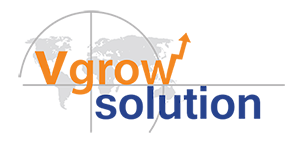Comparing ChatGPT with Traditional Scheduling Assistants: Which Saves You More Time?
In today’s fast-paced world, efficiency and time control are more than buzzwords—they’re crucial to successful enterprise operations. As someone who has navigated traditional and digital geographical regions of scheduling and administrative assistance, I’ve seen firsthand the evolution from conventional appointment setters to state-of-the-art digital assistants.
In this blog, I’ll explore how tools like ChatGPT work with virtual appointment scheduling assistants, specializing in their capability to shop time and decorate productiveness.
Table of Contents
The Rise of Virtual Assistance
Appointment setter virtual assistant has revolutionized the way corporations deal with administrative responsibilities. Unlike conventional secretaries or receptionists who manipulate schedules from a table inside the office, virtual assistants (VAs) operate remotely, using generation to manipulate appointments, emails, and different obligations. The data are telling: the latest survey indicated that organizations employing virtual assistants reported a 13% growth in productiveness. Here are some key benefits of using a virtual receptionist appointment scheduling:
- Accessibility: VAs are to be had around the clock and are now not restrained using office hours.
- Cost-effectiveness: Businesses keep on workplace area and assets.
- Scalability: Services can be scaled up or down primarily based on calls without the logistically demanding situations of hiring more staff.
ChatGPT vs. Traditional Scheduling Assistants
Regarding scheduling efficiency and effectiveness, AI-powered tools such as ChatGPT demonstrate significant advantages with virtual receptionist scheduling over traditional scheduling assistants. Here’s an expanded look at how ChatGPT excels in this domain:
1. Instant Response
Unlike traditional work, ChatGPT provides instant responses to queries for virtual receptionist scheduling assistants, enabling real-time handling of appointment requests and scheduling adjustments. This capability ensures no time is wasted waiting for responses, enhancing productivity.
2. Integration and Automation
ChatGPT can seamlessly integrate with various calendar management systems and automatically set or reschedule appointments, a task traditionally managed by virtual assistant appointment setters. This integration minimizes the risk of human error and the inefficiency of manual entry, as AI can synchronize schedules across multiple platforms without human intervention.
3. Data Handling and Optimization
Beyond simple appointment scheduling, ChatGPT excels in analyzing and utilizing data from past interactions. This allows for optimized scheduling decisions based on preferences and historical patterns, which is often beyond the scope of traditional outsource appointment scheduling services. ChatGPT can identify the best meeting times based on participant availability and prior commitments, significantly improving over conventional methods.
4. Comprehensive Functionality
The debate between using an AI tool like ChatGPT and human experts isn’t just about speed. AI tools offer a broader range of functionalities, including managing online meeting scheduling, tracking participant engagement, and suggesting optimal meeting times based on AI-driven analytics. These capabilities are integrated into one platform, whereas traditional appointment setter virtual assistants may need multiple tools and still not achieve the same efficiency level.
5. Cost Efficiency
Implementing AI like ChatGPT can be more cost-effective than hiring full-time staff for virtual appointment scheduling. Businesses can reduce labor costs and decrease the downtime associated with human-managed scheduling errors and inefficiencies.
6. Scalability
AI solutions such as ChatGPT are highly scalable and capable of handling growing work as a business expands. This is a clear advantage over hiring additional staff to manage increased scheduling demands, which is common with traditional virtual receptionist appointment scheduling.
Challenges and Considerations
While the blessings are substantial, there are challenges to bear in mind while transitioning from traditional to virtual appointment scheduling:
- Dependency on Technology: The effectiveness of digital assistants hinges on the reliability of the era used.
- Personal Touch: Some customers might also choose traditional assistants because of their non-public interplay, which may be much less pronounced with digital or AI assistants.
Key Takeaways
As we conclude our deep dive into the comparative efficiency of ChatGPT vs conventional scheduling assistants, it’s clear that integrating AI and virtual tools into appointment scheduling can notably streamline operations and beautify productivity. Here are three crucial takeaways from our dialogue:
- Leverage AI Efficiency: Embrace tools like ChatGPT for quicker, more accurate appointment scheduling and calendar control. AI’s automation and information-handling abilities substantially lessen the time spent on guide scheduling duties.
- Enhance Scalability: Virtual assistants can cope with varying workload levels without needing physical space and conventional hiring techniques. This flexibility allows agencies to scale their operations more efficiently and respond more swiftly to adjustments in demand.
- Focus on Cost-Effectiveness: Organizations can decrease hard work prices and operational costs by adopting virtual and AI-driven scheduling solutions, resulting in higher useful resource allocation and improved financial health.
We’ve explored how virtual receptionist appointment scheduling and AI-pushed gear like ChatGPT can rework traditional appointment scheduling strategies, presenting tremendous performance, scalability, and value-effectiveness benefits.
We invite you to share your thoughts and stories in the comments to further this discussion and connect with like-minded specialists. For extra insights and the ultra-modern trends in efficient commercial enterprise strategies, follow us on our social media platforms: Facebook, Instagram, and Linkedin. Stay engaged and knowledgeable as we navigate the evolving landscape of place of work productivity and digital transformation collectively.






